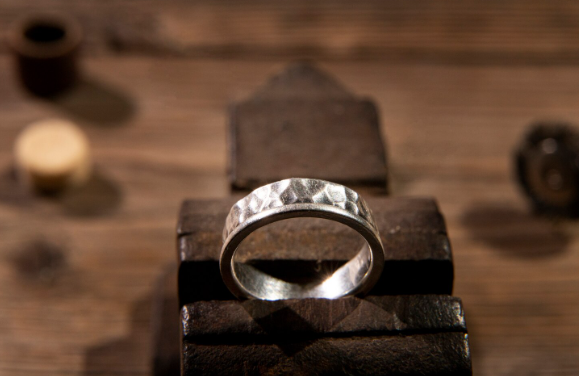
Jewelers Block Insurance
The jewelry industry holds some of the most valuable assets in the marketplace, from sparkling diamonds to luxury watches worth millions. Yet, these treasures face constant risks, including theft, burglary, shipment losses, and even mysterious disappearances. Each year, jewelry businesses across the United States report financial damages reaching into the billions due to criminal activity and unexpected losses.
Standard business insurance rarely covers such high-value items, leaving jewelers exposed to devastating setbacks. This is why jewelers block insurance exists. Built specifically for jewelry retailers, wholesalers, and craftsmen, it safeguards inventory, goods in transit, and even customer-owned pieces entrusted for repair or appraisal. Understanding how this insurance works, what it costs, and the factors shaping premiums is essential for every jeweler who wants to protect both their livelihood and their reputation.
Jewelers’ block insurance is a specialized policy created to protect jewelry businesses from the unique risks they face every day. Unlike standard commercial property insurance, it covers high-value items such as diamonds, watches, gemstones, and precious metals. This protection applies not only to inventory inside the store but also to goods in transit, whether shipped to customers, moved between locations, or displayed at trade shows.
Another key feature is coverage for customer property. When clients leave items for cleaning, repair, or appraisal, jewelers remain responsible for their safety. If loss, theft, or damage occurs, jewelers block insurance ensures the business does not absorb the full financial hit.
Premiums vary based on inventory value, location, security measures, and claims history. While costs may be significant, the policy shields jewellers from devastating financial losses caused by robbery, burglary, or mysterious disappearance. In short, jewelers block insurance provides peace of mind, helping businesses operate with security, stability, and customer trust.

The average jewelry block insurance premium in the United States ranges widely, usually between $3,000 to $10,000 annually for small to mid-sized stores. High-value jewelers or wholesalers with inventories exceeding several million dollars often pay $20,000 or more per year. While these numbers appear significant, the protection outweighs the potential financial hit of a major theft, which can easily climb into the millions. Insurers calculate jewelry insurance premiums based on exposure levels, making each policy highly customized.
Running a jewelry business may look similar to managing other retail shops at first glance. A jeweler has a store, employees, and inventory like any bookstore or clothing boutique. However, beneath the surface, the risks that come with selling diamonds, gold, and luxury watches are far more complex. The stakes in this industry are exceptionally high, and that is why specialized insurance is not optional but essential.
A bookstore may hold thousands of items, but the combined value of that stock rarely matches the worth of even a few trays of jewelry. A single diamond ring can carry a price tag of $15,000 or more. Luxury watches often reach six figures. This means every piece of merchandise represents a large financial risk. Losing just one item could be equal to the loss of hundreds of units in another type of retail business.
For this reason, jewelry block insurance was designed to provide coverage that matches the value of the merchandise. Without it, jewelers would struggle to recover from a single theft or major loss. Standard business policies usually impose strict limits on high-value goods, leaving jewelers with dangerous gaps in protection. Specialized coverage bridges this gap, ensuring that inventory remains financially safeguarded at all times.

The very nature of jewelry makes it attractive to criminals. It is small, portable, and easy to sell illegally. Unlike electronics or other retail items, jewelry can often be resold without much trace. Thieves recognize this, which is why jewelers have historically faced higher burglary and robbery rates than most retailers.
The risks increase whenever inventory is moved. Whether items are being transported to trade shows, shipped to online buyers, or delivered between branches, the exposure multiplies. According to U.S. crime statistics, jewelry shipments continue to be a major target for theft during transit. Criminals often exploit weak points in logistics, such as delivery drop-offs or unguarded transfers. Specialized insurance acknowledges this risk by covering goods in transit, something most general business policies exclude.
The risks jewelers face are not limited to theft. Jewelry pieces are delicate, crafted with precision, and often embedded with fragile gemstones. Watches contain intricate mechanisms that can be damaged during cleaning, handling, or repair. A minor slip or accidental drop could result in a financial loss worth thousands of dollars.
When customers leave items for repair or appraisal, the responsibility for those goods rests on the jeweler. If damage or loss occurs, the business can be held liable. Specialized insurance steps in to cover these situations, protecting both the business and its reputation. Customers feel reassured knowing their valuable property is protected while in professional care.
Many business owners assume that their existing commercial property insurance will cover jewelry in the same way it protects clothing, furniture, or electronics. Unfortunately, this assumption is often costly. General business policies typically cap coverage for jewelry at a very low amount, sometimes no more than $2,500. For a jewelry store holding millions in inventory, this limit barely scratches the surface.
This is where specialized insurance makes the difference. Jewelers block policies are structured specifically for the industry. They account for the high value of inventory, the risks of transportation, and the vulnerability of goods under repair. Instead of facing exclusions or low payout limits, jewelers gain tailored protection designed for their exact needs.
Specialized insurance does more than protect financial assets—it builds customer confidence. When clients leave a diamond ring for resizing or a watch for cleaning, they want assurance that their property is safe. A jeweler with proper coverage demonstrates responsibility and professionalism.
In the event of loss or damage, insurance ensures customers are compensated quickly. This helps maintain trust, avoid legal disputes, and preserve the business’s reputation. In an industry built on relationships and credibility, the value of trust cannot be overstated.
Jewelry businesses often operate on tight profit margins. A major theft or loss can erase years of hard work. Without insurance, recovery becomes almost impossible. Specialized coverage provides the safety net that allows jewelers to continue operations even after significant setbacks. It ensures financial stability, supports long-term growth, and helps businesses survive in a competitive market.
For many jewelers, the cost of specialized insurance may seem high. However, compared to the potential losses, it represents a wise investment. In fact, insurers often provide additional benefits such as security advice, employee screening recommendations, and risk management strategies. These services help reduce the chances of loss, making the business stronger overall.
Every jewelers block insurance policy can differ, so it’s essential to carefully review your policy and understand the specific coverages and exclusions. Generally, these policies protect the following areas:
Jewellery is highly valuable and naturally attracts the attention of criminals. Policies typically cover losses from a wide range of theft scenarios, including smash-and-grab robberies, employee theft, organised crime, and shoplifting. This ensures that even in the event of unexpected criminal activity, your inventory and financial stability remain protected.
Jewelry is delicate, and mishaps can happen during repair, resizing, or handling—jewellers’ block insurance safeguards against accidental breakage, damage, or destruction of inventory. Many policies also cover fire damage to your premises. However, natural disasters such as wildfires or floods may not be included, so it’s important to clarify these exclusions with your insurance broker.
Jewellery constantly moves between locations, whether from suppliers, dealers, or directly to customers. Policies typically include protection for items in transit, ensuring that merchandise remains covered while travelling to or from your store, trade shows, or client deliveries.
Taking inventory to exhibitions, trade shows, or temporary display locations introduces additional risk. Jewellers’ block insurance extends coverage beyond your primary store, protecting valuable merchandise from loss or damage wherever it is temporarily housed.
By covering these critical areas, jewellers’ block insurance provides comprehensive protection, allowing business owners to focus on growth and customer service without worrying about financial setbacks from unexpected losses.
Jewelry block insurance cost does not follow a fixed rate. Instead, insurers evaluate multiple elements before finalizing premiums. Let’s look closely at the most important factors.
The higher the value of jewelry on display or in storage, the higher the premium. Diamond-heavy inventories often carry more risk than gold or silver items due to their portability and resale value. Watches, branded luxury items, and rare gemstones also increase exposure. For jewelers, accurately declaring inventory helps insurers price policies fairly.
Geography plays a major role in jewelry block insurance cost. Businesses located in major metropolitan areas often face higher crime risks, leading to higher premiums. For example, jewelers in New York or Los Angeles usually pay more than those in smaller towns with lower crime rates. Insurance for jewelers in high-crime neighborhoods may require strict security upgrades before policies are issued.
Security directly impacts jewelry insurance premiums. Insurers prefer businesses with strong protective systems, including:
A jeweler investing in advanced protection often qualifies for reduced premiums since insurers view the business as a lower risk.
Many jewellers transport merchandise to customers, trade shows, or other stores. The more frequently items are shipped, the higher the chance of loss. Premiums rise if goods regularly move across states or internationally. Insurers may adjust jewellery block insurance cost based on the jeweller’s preferred carriers, packaging practices, and delivery methods.
Insurance for jewellers also depends on past claims. A business with multiple theft or loss claims typically pays more. Insurers analyse whether losses resulted from weak security or unavoidable circumstances. Jewellers with a clean claims record enjoy better rates and stronger negotiation power.
Small independent jewellers with limited inventory often pay less compared to large wholesalers managing millions in merchandise. Annual revenue and stock turnover also factor into pricing. Businesses with frequent high-value transactions are considered higher risk, leading to increased jewellery insurance premiums.
Why Jewelry Block Insurance Premiums Are Worth the Cost
Some jewellers hesitate to pay thousands of dollars annually for coverage. However, a single robbery, burglary, or shipment loss can instantly erase years of profits. Consider this example: a jeweler in Chicago lost $500,000 worth of diamonds during a daylight robbery. Without jewelry block insurance, recovery would have been impossible. With proper coverage, the business resumed operations quickly. In essence, the cost of premiums pales compared to the financial devastation of uninsured losses.
How Jewelers Can Reduce Insurance Premiums
While jewellery block insurance costs remain unavoidable, jewellers can adopt strategies to manage expenses. Installing stronger vaults, hiring trained security staff, and limiting the amount of merchandise displayed at once all help. Building long-term relationships with insurers and maintaining a clean claims record also lead to lower premiums over time. Some insurers even offer risk assessment programs to guide jewelers in minimizing vulnerabilities.
The Impact of E-Commerce on Jewelry Insurance Cost
The growth of online jewelry sales has changed premium structures. Jewelers selling through websites face new risks like shipping theft, porch piracy, and fraudulent orders. As shipping frequency increases, insurers factor these into jewelry insurance premiums. Businesses that implement secure shipping practices and partner with trusted carriers usually manage lower costs despite higher transaction volumes.
Jewellery businesses in the U.S. must weigh the risks of theft, shipping losses, and mysterious disappearances against the expense of coverage. The jewellery block insurance cost varies based on inventory value, business location, security measures, claims history, and revenue size. While premiums may seem high, they protect jewellers from financial ruin. Insurance for jewellers not only ensures survival after unexpected losses but also strengthens customer trust. By investing in strong security and maintaining a clean claims record, jewellers can keep jewelry insurance premiums manageable while enjoying the peace of mind that their livelihood stays protected.